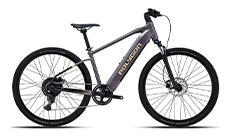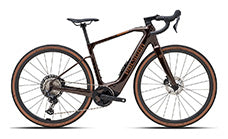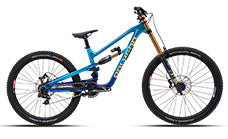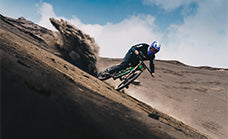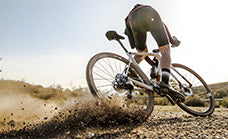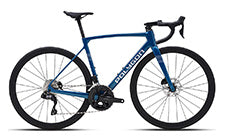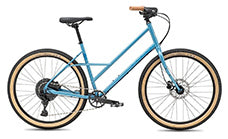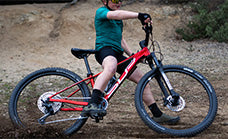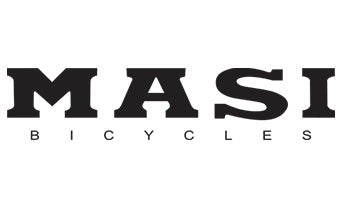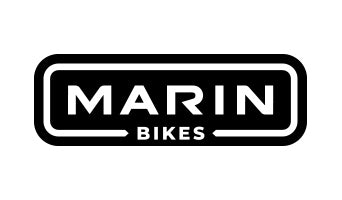A Beginner's Guide to Bike Shoes: Everything You Need to Know in 2025
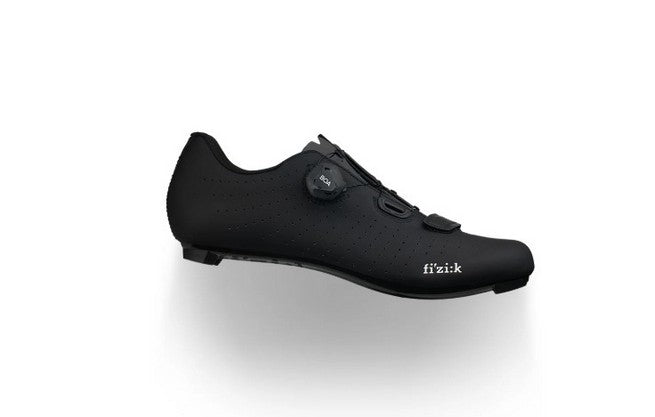
Cycling Footwear
The right bike shoes can transform your cycling experience, offering improved power transfer, comfort, and safety. As a beginner, understanding the different types and features available helps you make an informed decision that matches your riding style and goals.
Types of Cycling Shoes
Road Bike Shoes
Key Characteristics:
- Stiff carbon or nylon soles
- Three-bolt cleat system (Look, Shimano SPD-SL)
- Smooth, hard soles for minimal flex
- Lightweight construction
Best Uses:
- Long-distance road riding
- Racing and performance cycling
- Smooth, paved surfaces
- Maximum power transfer needs
Mountain Bike Shoes
Essential Features:
- Two-bolt cleat system (SPD)
- Recessed cleat design
- Treaded soles for walking
- More flexible than road shoes
Ideal Applications:
- Trail riding and mountain biking
- Gravel riding adventures
- Off-road touring
- Technical terrain navigation
Commuter/Casual Cycling Shoes
Practical Elements:
- Flat pedal compatibility
- Street shoe appearance
- Comfortable for walking
- Weather-resistant options
Perfect For:
- Daily commuting
- Urban cycling
- Casual weekend rides
- Multi-activity use
Understanding Shoe Fit
Sizing Considerations
Important Factors:
- EU vs US sizing differences
- Brand-specific fit variations
- Sock thickness allowance
- Hot spot prevention
Measurement Process:
- Measure feet in afternoon/evening
- Check both feet (often different sizes)
- Consider width requirements
- Allow for sock thickness
Common Fit Problems
Issues to Avoid:
- Numb toes (too tight)
- Heel slipping (too loose)
- Pressure points
- Cramped forefoot
Material and Construction
Upper Materials
Options Available:
- Synthetic leather (durable, budget-friendly)
- Genuine leather (premium feel, breathability)
- Mesh panels (ventilation)
- Knit uppers (modern comfort)
Sole Materials
Construction Types:
- Carbon fiber (stiffest, most expensive)
- Nylon composite (good value)
- Fiberglass blend (mid-range performance)
- Rubber outsoles (walking comfort)
Closure Systems Explained
Velcro Straps
Advantages:
- Easy adjustment
- Wide fit range
- Simple operation
- Cost-effective
Ratchet/Buckle Systems
Benefits:
- Fine-tuned adjustment
- Secure fit retention
- Professional feel
- Replaceable parts
Boa Dial Closures
Modern Features:
- Micro-adjustability
- Even pressure distribution
- Quick release option
- Durability
Lace Systems
Traditional Benefits:
- Customizable pressure zones
- Classic aesthetic
- Economical choice
- No mechanical failures
Sole Stiffness Index
Rating System Explained
Stiffness Scale:
- 5-6: Casual riding, touring
- 7-8: Sport cycling, beginners
- 9-10: Performance riding
- 11-12: Professional racing
Comfort vs Performance:
- Stiffer = better power transfer
- Flexible = walking comfort
- Balance based on needs
- Consider riding duration
Cleat Compatibility
Two-bolt System (SPD)
Applications:
- Mountain biking standard
- Gravel cycling popular
- Touring bike friendly
- Easier walking ability
Three-bolt Systems
Types:
- Look Keo (French standard)
- Shimano SPD-SL (Japanese design)
- Time iClic (unique design)
- Wahoo Speedplay (four-bolt system)
Cleat Positioning
Important Adjustments:
- Fore/aft positioning
- Lateral alignment
- Float adjustment options
- Professional fitting benefits
Essential Features for Beginners
Ventilation Systems
Design Elements:
- Mesh inserts
- Perforated uppers
- Moisture management
- Temperature regulation
Reflective Elements
Safety Features:
- Heel reflectors
- Side panel visibility
- Night riding considerations
- Traffic awareness
Ankle Support
Support Levels:
- Low-cut (road cycling)
- Mid-cut (mountain biking)
- High-cut (extreme sports)
- Personal preference
Budget-Friendly Options
Entry-Level Recommendations
Under $100:
Shimano RC1: Road cycling value
- Basic features
- Reliable performance
- Good entry point
Shimano ME3: MTB beginner friendly
- Walkable design
- Durable construction
- Versatile use
Mid-Range Choices
$100-$200:
Giro Privateer: Mountain favorite
- Superior comfort
- Vibram outsole
- All-day wearability
Bontrager Velocis: Road performance
- BOA closure
- Carbon reinforced
- Better stiffness
Care and Maintenance
Cleaning Instructions
Proper Care:
- Regular cleaning after rides
- Gentle soap and water
- Avoid machine washing
- Air dry only
Storage Tips
Best Practices:
- Cool, dry place
- Avoid direct sunlight
- Use shoe trees
- Rotate pairs if possible
Replacement Indicators
Signs to Replace:
- Sole delamination
- Worn cleats (replace annually)
- BOA malfunction
- Persistent discomfort
Common Beginner Mistakes
Sizing Errors
Avoid These:
- Ordering without trying
- Ignoring wide/narrow options
- Buying too small for "efficiency"
- Forgetting sock thickness
Feature Mismatches
Consider:
- Road shoes on flat pedals
- Clipless before comfort basics
- Racing stiffness for touring
- Incompatible cleat systems
Transitioning to Clipless
Timeline Suggestions
Week 1-2:
- Practice at home
- Stationary trainer use
- Empty parking lots
- Non-traffic areas
Week 3-4:
- Short road rides
- Quiet neighborhoods
- Gradual distance increase
- Build confidence
Safety Tips
Important Practices:
- Start with loose springs
- Practice emergency unclipping
- Keep one foot out at stops
- Inform riding partners
Frequently Asked Questions
Q: Do I need special shoes for casual cycling? A: For casual riding and commuting, regular athletic shoes work fine with flat pedals. Dedicated cycling shoes become beneficial when riding longer distances or seeking better efficiency.
Q: What's the difference between expensive and budget cycling shoes? A: Higher-priced shoes typically offer lighter weight, stiffer soles, better ventilation, and premium materials. Budget options provide adequate performance for beginners and casual riders.
Q: How do I know if cycling shoes fit properly? A: Proper fit involves no pressure points, minimal toe movement, secure heel placement, and comfort during exercise. Your foot shouldn't feel cramped or move excessively within the shoe.
Q: Can I walk normally in cycling shoes? A: Mountain bike shoes with recessed cleats allow reasonable walking. Road cycling shoes have protruding cleats making walking difficult. Consider two-bolt systems for better walkability.
Q: How often should I replace cycling shoes? A: With regular use, cycling shoes last 2-3 years. Replace when experiencing discomfort, sole damage, or closure system failure. Cleats should be replaced annually or when worn.
Making Your Final Decision
Choosing your first cycling shoes involves balancing several factors:
- Riding Purpose: Match shoes to your primary cycling style
- Budget Constraints: Quality within your price range
- Comfort Priority: Proper fit over fashion
- Performance Needs: Stiffness appropriate for riding intensity
- Future Considerations: Room for cycling progression
Remember that comfort is paramount for enjoyable cycling. Start with features that match your current needs, then upgrade as your cycling interests evolve.


